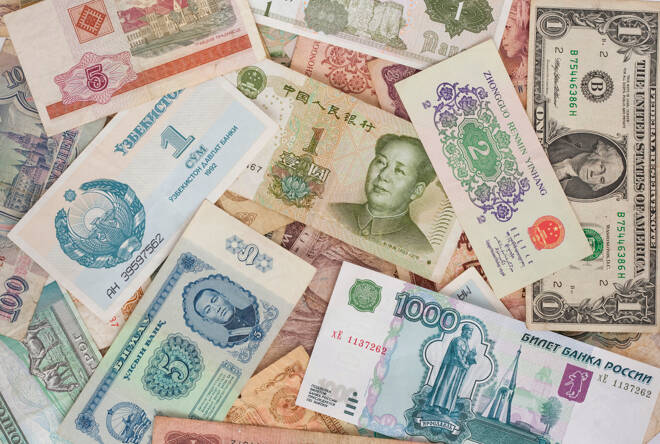Advertisement
Advertisement
EUR/USD, DXY and Interest Rates
By:
In the stucture of the currency price is first anf forremost interest rate averages as market prices and life derives from averages. For USD today is found 1.0207 and EUR is located 1.0070. DXY is extraordinarily high but not to the sick degree of NZD at 1.09.
All life in a market price is the beginning at parity or 1.0 then prices travel upwards. Parity is the safe number and allows a market price to trade above.
The difference between 1.0207 and 1.0070 is 0.0137 or 0.0068. By 0.0068, DXY informs the range today and only for today is located at 90.58 and 89.22. EUR/USD ranges are located at 1.2246 and 1.2110.
The problem is the ranges are to wide for today’s daytrade. Good to know this information but the daytrade will result in losses by longs and shorts entered at wrong prices and target never to materialize.
Take EUR by itself using averages and we have 1.2248 and 1.2108. Wrong again to ranges and result to trade losses. To DXY by itself and we have 90.92 and 88.87. Guaranteed losses and both not even good for future targets.
Interest rate averages change daily and informs the depth and degree of overbought and oversold in relation to parity yet its common to use those averages to gauge ranges although the day ranges are never exact for a day trade. Important is interest rate average ranges
AUD/USD became a strange currency by the last RBA drop to OCR and its the first ever fixed average at 1.0015. NZD is in the richter scale to overbought. Traditional averages once changed daily by wider movements and in relation to daily interest rates. But under the patron saint of central bank authoritarian control, no longer are wide movements seen as experienced in great trade days of old.
Consider the EUR/USD just before the ECB went negative in 2014, interest rate averages were trading at 1.04 and 1.05. Negative or not to the ECB as the EUR was flying miles lower by its own volition. NZD is a 0 point currency and trades at 1.09. This is extraordinary but noted also by a quick view.
Today’s EUR at 1.0070 is a drop from 1.0082 yesterday. Quite extraordinary, yesterday’s Fed interest rates failed to change so today we deal with the same 1.0207 and overbought for USD and oversold EUR/USD.
The second element is add daily interest rates to the structure to find the exact shorts, longs and ranges for today. Ranges are fairly fixed due to interest rates changes by small amounts.
Overnight rates once changed substantially everyday and was wholly responsible for interest rate average movements but no longer since the central bank changes in 2016. Today, interest rate maturities run prices but not by much as maturities rarely change by any movements worthy to talk about so its why daily movements became fixed into far less ranges than pre 2016.
Outlined today is the exact methodology used by central banks for their own trades. I am perfectly in line to any central bank on the planet. And its very simple to trade and factor everyday. The trade requires a click and nothing else.
EUR/USD today
1.2116, 1.2123, 1.2131, 1.2139, 1.2147, 1.2155, Vs 1.2185, 1.2193, 1.2201, 1.2209, 1.2216, 1.2224, 1.2232 and 1.2241.
Most Vital: 1`.2147 and 1.2155 Vs 1.2209 and 1.2241.
EUR/USD today dead stopped at 1.2224 and above 1.2209. EUR will go short today. The trader job is click and click.
DAX
The same interest rates used for currencies are deployed for stock indices. Here;s the DAX structure.
69.88, 34.94, 17.47, 8.73, 4.36, 2.18, slight changes daily but not much. The best the DAX can trade is 2 times its range and today that means 139.76 points.
S&P’s
Here’s the structure: 19.63, 9.81, 4.90, 2.45, 1.22. The best the S&P’s can trade s 2 times its range or 39.26 points. Slight changes daily but very small. The structure for stock indices and currencies is fixed but the fix is what earns profits.
About the Author
Brian Twomeycontributor
Brian's published works include John Wiley 2011 "Inside the Currency Market", Using Z Scores to Trade Foreign Exchange, 2012. Academic Paper: 2015, A case study in carry trade and cross pair allegiance switching, pre and post 2008.
Advertisement
